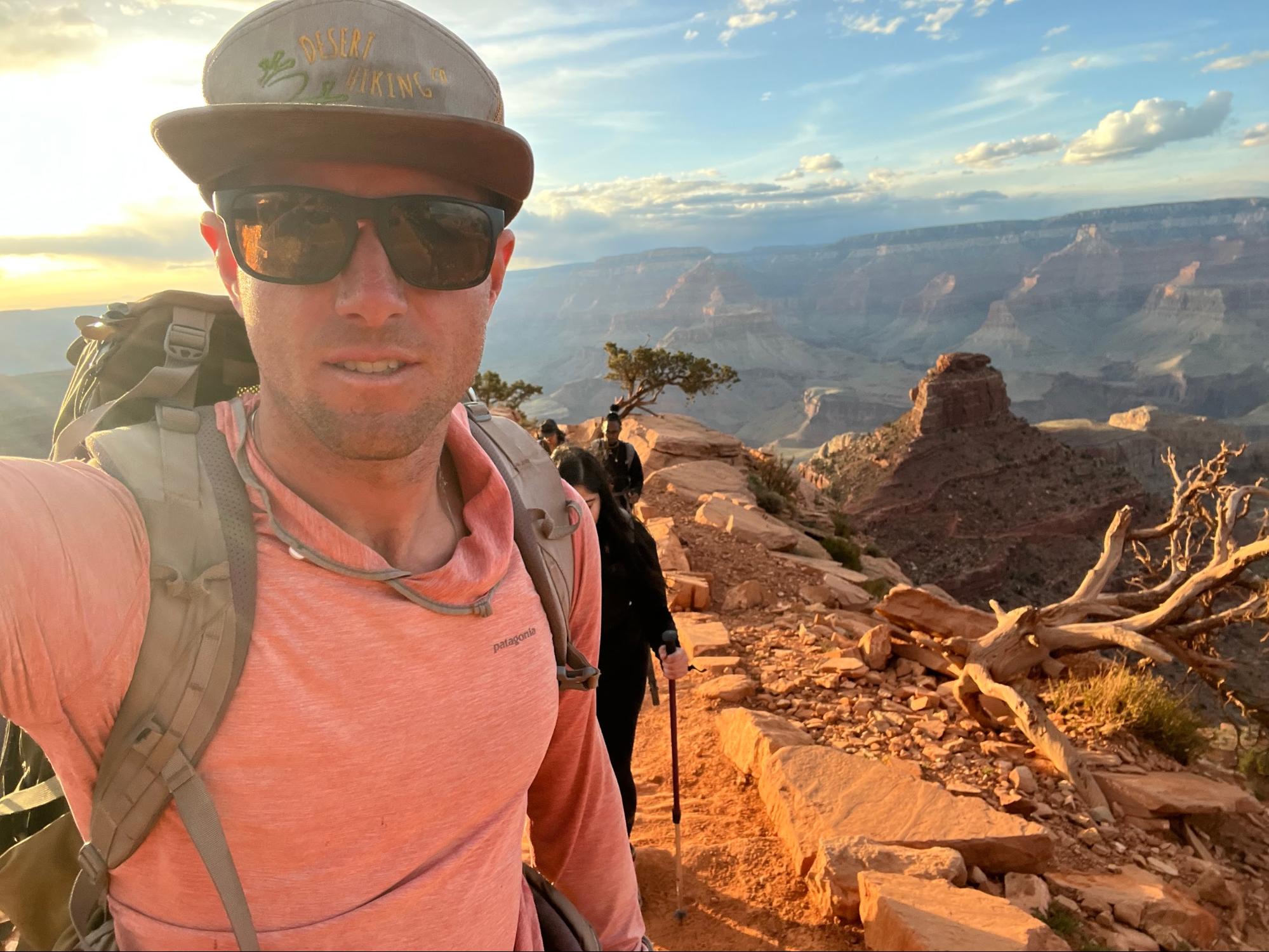Desert Sun Protection Tips: More Than Just Sunscreen
Hiking in the desert comes with its unique set of challenges, and sun exposure is at the top of the list. The desert’s intense sunlight and reflective surfaces can quickly lead to sunburn, dehydration, and heat-related illnesses if you’re not adequately protected. While sunscreen is essential, effective desert sun protection tips go far beyond that. Here’s how to stay safe and comfortable under the desert sun:
Wear UPF-Rated Clothing for Desert Sun Protection
Ultraviolet Protection Factor (UPF) clothing is designed to block out harmful UV rays, offering an extra layer of defense against the sun. Long-sleeve shirts, lightweight pants, and neck gaiters with a high UPF rating are essential pieces for desert hikes. Look for garments that are lightweight, moisture-wicking, and breathable to keep you cool while protecting your skin.
Tip: Choose light-colored clothing, as it reflects the sun’s rays better than dark colors, helping to keep you cooler.
Opt for a Wide-Brimmed Hat For Better Sun Protection in the Desert
A wide-brimmed hat provides more coverage than a standard baseball cap, shading your face, ears, and neck. Hats with built-in UV protection and ventilation panels can offer sun protection while allowing for airflow. This helps prevent sunburn and reduces your risk of overheating.
Tip: A hat with an adjustable chin strap is beneficial for windy days on exposed trails.
Protect Your Eyes with Quality Sunglasses
Desert hiking exposes your eyes to intense sunlight, glare, and UV radiation that can lead to eye strain or damage. Invest in a pair of high-quality sunglasses that block 100% of UV rays. Polarized lenses are particularly effective in reducing glare from reflective surfaces such as sand, rocks, and water.
Tip: Wraparound sunglasses provide additional protection by blocking light from the sides.
Use a Neck Gaiter or Bandana
A neck gaiter or bandana can be worn around your neck or pulled up over your face to shield sensitive areas from the sun. Some gaiters are designed with cooling technology or UPF fabric, making them a multifunctional item that protects against both UV rays and dust.
Tip: Wet your neck gaiter and wear it around your neck to help regulate your body temperature during particularly hot sections of your hike.
Sunscreen Protection: Your First Line of Defense in the Desert
While sunscreen isn’t the only form of protection you need, it’s still a must-have. Apply a broad-spectrum sunscreen with an SPF of at least 30 to all exposed skin, including your face, ears, back of the neck, and hands. Reapply every two hours, or more frequently if you’re sweating heavily.
Tip: Choose a water-resistant sunscreen to ensure it stays effective through sweat or accidental splashes.
Lip Protection for Desert Hikes
Your lips are particularly vulnerable to sun damage and can easily become chapped or burned. Use a lip balm with SPF 30 or higher to keep them protected and moisturized throughout your hike.
Tip: Reapply lip balm regularly, especially after eating or drinking.
Seek Shade When Possible
While it may not always be easy to find shade in the desert, taking advantage of natural cover during breaks can provide crucial relief from the sun. Look for shaded areas under rock overhangs or small desert trees, and plan your rest stops to coincide with these spots.
Tip: If natural shade is unavailable, consider bringing a lightweight, portable sunshade or umbrella.
Timing is Everything for Desert Hikes
The desert sun is most intense between 10 a.m. and 4 p.m. Plan your hike to start early in the morning or late in the afternoon to avoid peak sun exposure. Not only will you reduce your risk of sunburn, but you’ll also enjoy cooler temperatures and better lighting for photography.
Tip: Hiking at dawn or dusk can also provide opportunities to see wildlife that is more active during cooler hours.
Stay Hydrated and Cool
Sun protection isn’t just about shielding your skin; keeping your body temperature regulated is equally important. Drinking water consistently helps you stay hydrated and supports your body’s natural cooling processes. Pairing water with electrolyte drinks can replace lost minerals and help maintain energy levels.
Tip: Drink small sips frequently instead of large gulps, as this helps maintain hydration without overloading your stomach.
Desert Sun Protection Packing List:
- UPF-rated long-sleeve shirt and pants
- Wide-brimmed hat with UV protection
- Polarized sunglasses
- Neck gaiter or bandana with cooling technology
- Broad-spectrum SPF 30+ sunscreen
- Lip balm with SPF 30 or higher
- Electrolyte tablets or drinks
- Lightweight sunshade or umbrella
Conclusion: Stay Safe with These Desert Sun Protection Tips
Protecting yourself from the desert sun involves more than just applying sunscreen. By choosing the right clothing, wearing a wide-brimmed hat, protecting your eyes and lips, and timing your hikes smartly, you can enjoy your desert adventure without risking sunburn or heat-related issues. Taking these extra steps ensures that your desert hikes are not only safe but also more enjoyable and comfortable. Click here to book your guided experience with a professional that ensures safety and takes the hassle out of the planning!
Want to learn more about our day hikes or backpacking trips?







